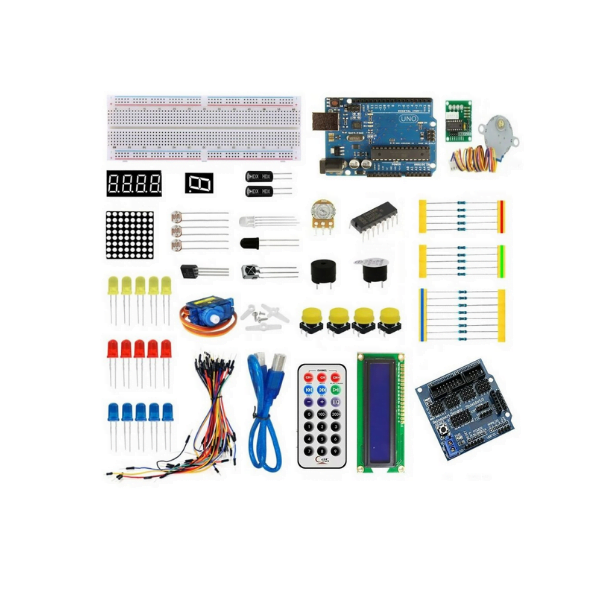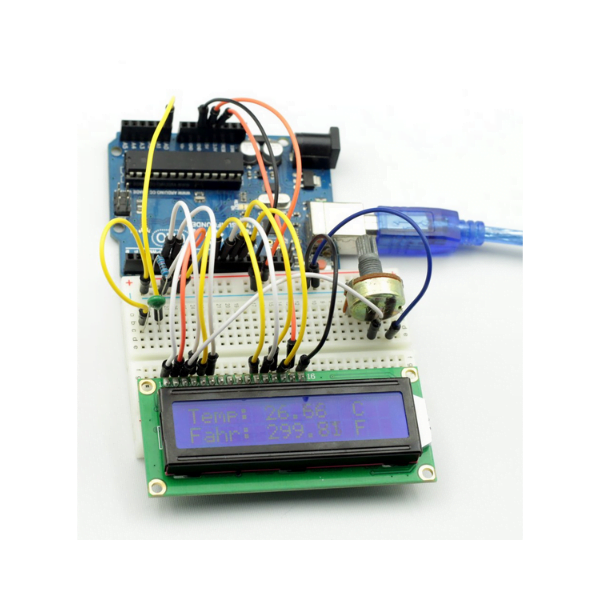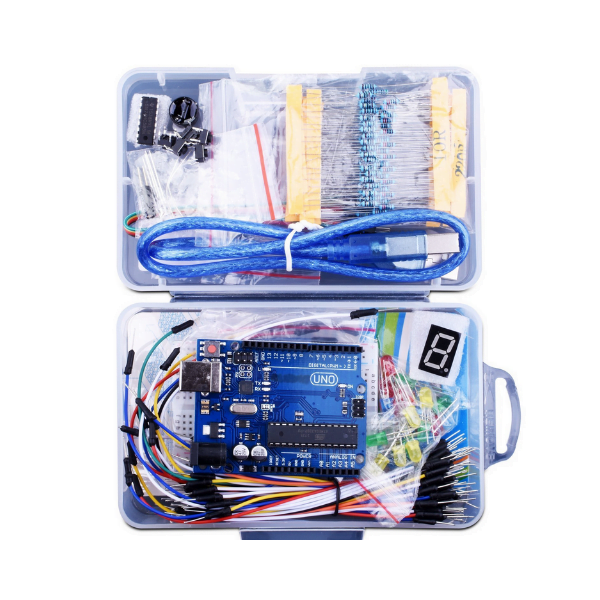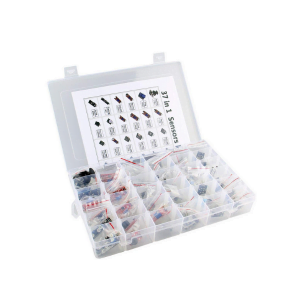Description
Basic Starter Kit
Want to learn how to work with electronics and programming but need a little help? You’ve come to the right place!
This is the basic starter kit, developed specially for those beginners who are interested in Arduino. You will have a set of Arduino’s most common and useful electronic components. What’s more, we will offer you a detailed tutorials including project introduction and their source codes. You may learn about Arduino through using these basic projects. This kit will help you control the physical world with sensors.
Compatibility with Official Arduino Software, Sensors and Codes
Arduino is an open-source platform used for building electronics projects. Arduino consists of both a physical programmable circuit board (often referred to as a microcontroller) and a piece of software, or IDE (integrated development environment) that runs on your computer, used to write and upload computer code to the physical board.
For the reason of open source, the manufacture of Arduino boards and software distribution by anyone is permitted. Arduino boards are available commercially in preassembled form, or as do-it-yourself (DIY) kits.
The Arduino board provided is compatible with the official Arduino microcontroller boards, they can use the official Arduino software, sensors and codes.
Starter Kit with High Quality Components and Sensors
Quantity and quality are both important here in Cretechs starter kit. The most essential parts in this kit are UNO R3 controller board and expansion board, which is a perfect Arduino clone with excellent product finish. Besides, we offer a wide variety of components and sensors from small parts like LED diodes, resistors and potentiometer to big parts like LCD1602, RFID module and 830 tie-points breadboard, which meet your demands for your different projects either it is simple or complex (components included are dependent on starter kit version).
Sturdy quality is definitely the most important thing to Cretechs even with so many components provided we never compromised on the quality. Instead we keep improving our product quality in our own factory and we produce the products by ourselves under high standards and strict quality control.
|
|
|
|
|---|---|---|
74HC595 Shift Register and LEDs74HC595 is a serial to parallel converter which has eight outputs (perfect) and three inputs that you use to feed data into it a bit at a time. This chip makes it a little slower to drive the LEDs (you can only change the LEDs about 500,000 times a second instead of 8,000,000 a second) but it’s still really fast, way faster than humans can detect, so it’s worth it. 74HC595 shift register is a type of chip that holds what can be thought of as eight memory locations, each of which can either be a 1 or a 0. To set each of these values on or off, we feed in the data using the ‘data’ and ‘clock’ pins of the chip. |
LCD1602 Display ModuleLCD1602 module is a display that has an LED backlight and can display two rows with up to 16 characters on each row. You can see the rectangles for each character on the display and the pixels that make up each character. The display is just white on blue and is intended for showing text. Lining up the display with the top of the breadboard helps to identify its pins without too much counting, especially if the breadboard has its rows numbered with row 1 as the top row of the board. Do not forget, the long yellow lead that links the slider of the pot to pin 3 of the display. The ‘pot’ is used to control the contrast of the display. |
Stepper MotorStepper motors are DC motors that move in discrete steps. They have multiple coils that are organized in groups called ‘phases’. By energizing each phase in sequence, the motor will rotate, one step at a time. With a computer controlled stepping you can achieve very precise positioning and/or speed control. For this reason, stepper motors are the motor of choice for many precision motion control applications. The simplest way of interfacing a unipolar stepper motor to Arduino is to use a breakout for ULN2003A transistor array chip, applying voltage to each of the coils in a specific sequence. |
*Product images are shown for illustrative purposes only and may differ from actual product.








